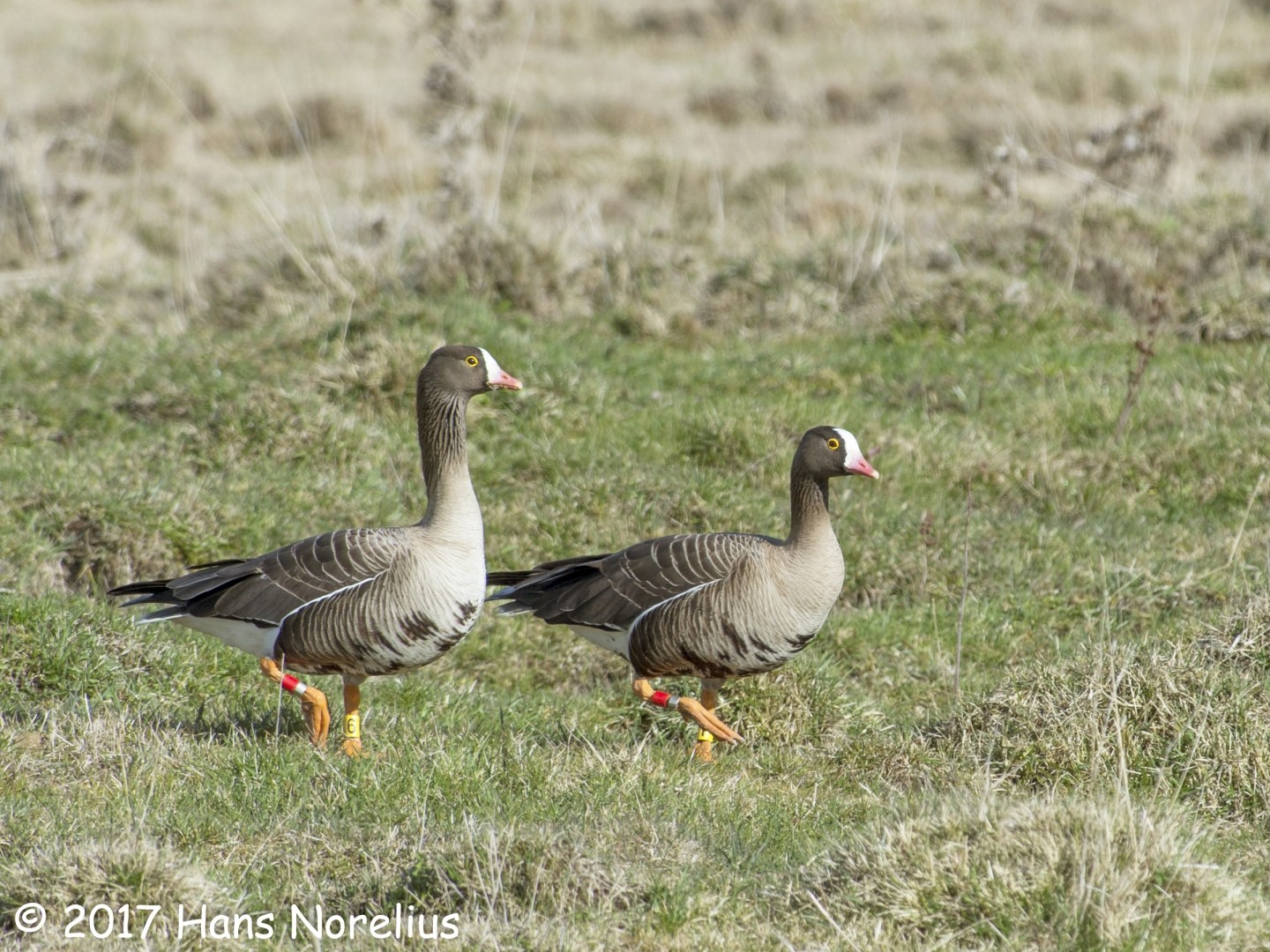Lesser White-fronted Goose
A species of Grey And White Geese Scientific name : Anser erythropus Genus : Grey And White Geese
Lesser White-fronted Goose, A species of Grey And White Geese
Botanical name: Anser erythropus
Genus: Grey And White Geese
Content
Description General Info
Description
The lesser white-fronted goose (Anser erythropus) is a goose closely related to the larger white-fronted goose (A. albifrons). It breeds in the northernmost Palearctic, but it is a scarce breeder in Europe. There is a re-introduction scheme in Fennoscandia. The scientific name comes from anser, the Latin for "goose", and erythropus, "red-footed", derived from the old Greek eruthros "red" and pous "foot". The lesser white-fronted goose winters further south in Europe and is a rare winter vagrant to Great Britain, and India. Individual birds formerly appeared regularly at WWT Slimbridge in Gloucestershire, England, where they inspired Sir Peter Scott to set up The Wildfowl and Wetlands Trust—modern records, however, are far less frequent, a consequence of the species' decline on its European breeding grounds. An attractive species, it is also widely kept in wildfowl collections and, as a result, escapes do occur; individuals seen in summer, or in the company of other feral geese, are likely to be of captive origin. The two white-fronted goose species differ little other than in size (the lesser, at 53–66 cm (21–26 in) length and with a 120–135 cm (47–53 in) wingspan, is not much bigger than a mallard (Anas platyrhynchos) but both may be readily distinguished from the greylag goose by their bright orange legs and their mouse-coloured upper wing-coverts. The greylag goose has a flesh-coloured bill and legs, and the upper wing-coverts are bluish-grey. Both white-front species have a very conspicuous white face and broad black bars which cross the belly. Adult lesser white-fronted geese, as well as being smaller than white-fronted geese, have an obvious yellow eye-ring, and the white facial blaze goes up to the crown. The lesser white-fronted goose is considered an endangered species, but there are programmes to reintroduce animals into the wild to strengthen the population. Additionally it is one of the species to which the Agreement on the Conservation of African-Eurasian Migratory Waterbirds (AEWA) applies. 
Size
66 cm
Life Expectancy
15 years
Nest Placement
Ground
Feeding Habits
Lesser White-fronted Goose primarily feed on plants, showcasing herbivorous habits. They engage in foraging behaviors, consuming a variety of vegetation along with select grain types. Their diet often includes grasses, berries, and seeds, reflecting their adaptation to diverse environments. Notable is their inclination for certain agricultural crops, delineating specific dietary preferences.
Habitat
The lesser White-fronted Goose is typically found in Arctic open habitats, including scrub-covered tundra adjacent to the taiga, as well as lakes and mountain slopes. These geese have a predilection for environments up to 700 meters in elevation in Scandinavian regions, where they may ascend to higher upland areas for molting. Siberian populations often inhabit meadows dominated by Carex species around large wetlands. During winter, the lesser White-fronted Goose favors dry ground, salt steppes, saltmarshes, other semi-arid grasslands, and agricultural areas.
Dite type
Herbivorous
General Info
Feeding Habits
Bird food type
Scientific Classification
Phylum
Chordates Class
Birds Order
Waterfowl Family
Geese Genus
Grey And White Geese Species
Lesser White-fronted Goose 